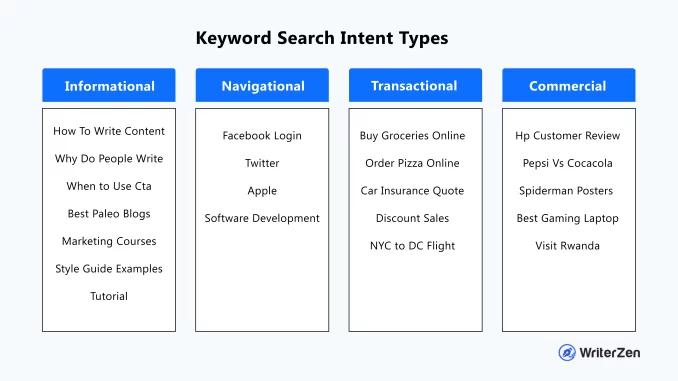
In the world of digital marketing, keyword research is a critical component of any successful strategy. By understanding what keywords your target audience is searching for, you can better tailor your content to attract the right visitors to your website. However, simply choosing keywords based on search volume or competition is not enough. User intent plays a crucial role in determining which keywords will drive the most relevant traffic to your site.
What is User Intent?
User intent refers to the underlying motivation behind a user’s search query. When someone enters a keyword into a search engine, they are typically looking for information, products, or services that match their specific needs or desires. Understanding user intent allows you to create content that aligns with what users are looking for, ultimately leading to higher click-through rates and conversions.
Types of User Intent
There are four main types of user intent that you should consider when conducting keyword research:
1. Informational Intent: Users are seeking information or answers to questions. Keywords with informational intent often start with phrases like “how to,” “what is,” or “best practices.”
2. Navigational Intent: Users are looking for a specific website or webpage. Keywords with navigational intent typically include brand names or specific product names.
3. Commercial Investigation Intent: Users are researching products or services before making a purchase. Keywords with commercial investigation intent often include terms like “reviews,” “comparison,” or “pricing.”
4. Transactional Intent: Users are ready to make a purchase. Keywords with transactional intent usually include action-oriented phrases like “buy now,” “order online,” or “free shipping.”
Why User Intent Matters in Keyword Research
Focusing on user intent in your keyword research allows you to target the right keywords that will attract users who are more likely to engage with your content and take the desired action on your site. By aligning your keywords with the intent behind a user’s search query, you can create a more impactful and relevant user experience.
How to Incorporate User Intent into Your Keyword Research
1. Use Keyword Research Tools: Utilize keyword research tools like SEMrush, Ahrefs, or Google Keyword Planner to identify keywords with high search volume and relevant user intent. Look for long-tail keywords that align with the specific needs of your target audience.
2. Analyze Search Engine Results Pages (SERPs): Examine the search results for your target keywords to understand the type of content that is ranking well. Pay attention to the format of the top-ranking pages and the intent behind the search queries.
3. Create Content that Matches User Intent: Tailor your content to meet the needs of users with different intent. For informational queries, create in-depth guides or tutorials. For transactional queries, include clear calls-to-action that encourage users to take the next step.
4. Monitor and Adjust: Continuously monitor the performance of your keywords and content to ensure they align with user intent. Analyze metrics like click-through rates, bounce rates, and conversion rates to make data-driven decisions.
Conclusion
User intent is a critical factor to consider when conducting keyword research for your website. By understanding the motivations behind a user’s search query, you can create content that resonates with your target audience and drives meaningful engagement. Incorporating user intent into your keyword research strategy will help you attract the right visitors to your site and ultimately improve your digital marketing efforts.
